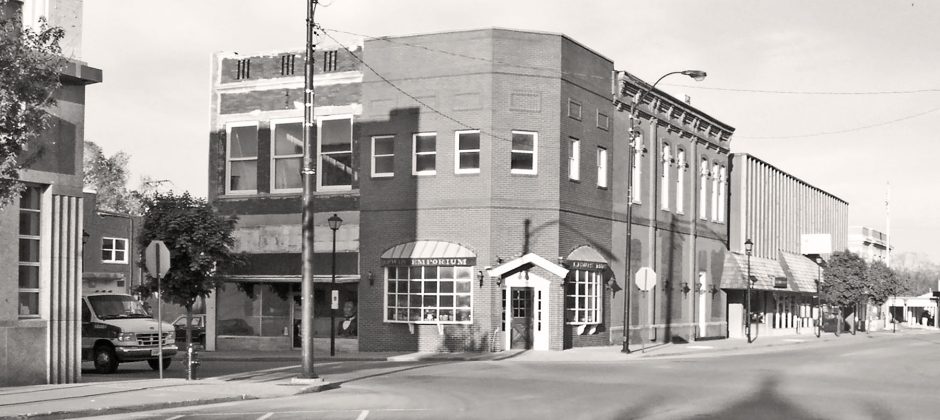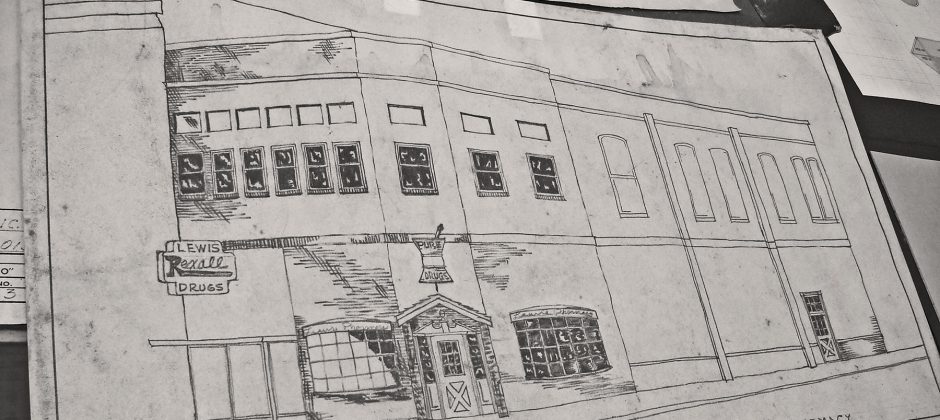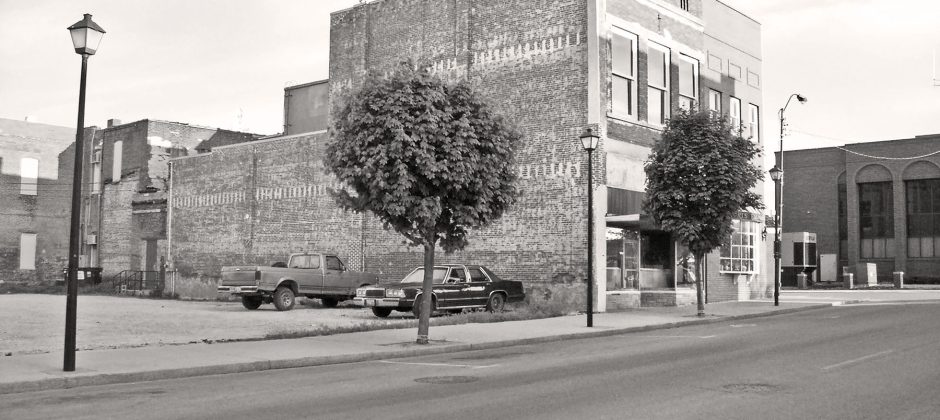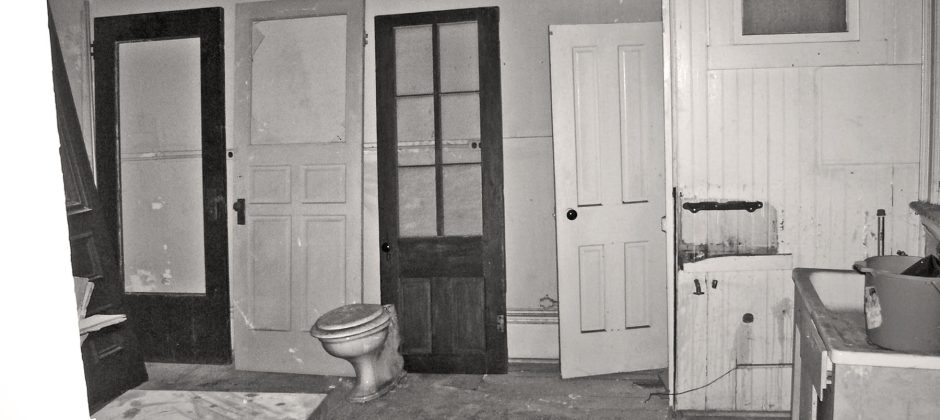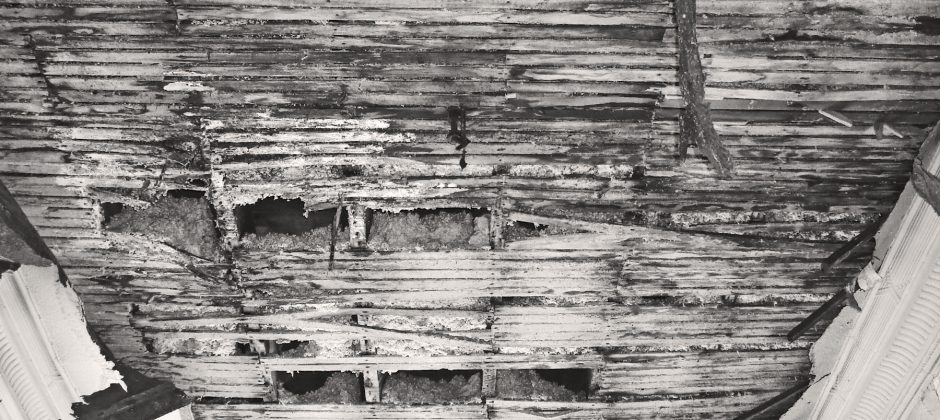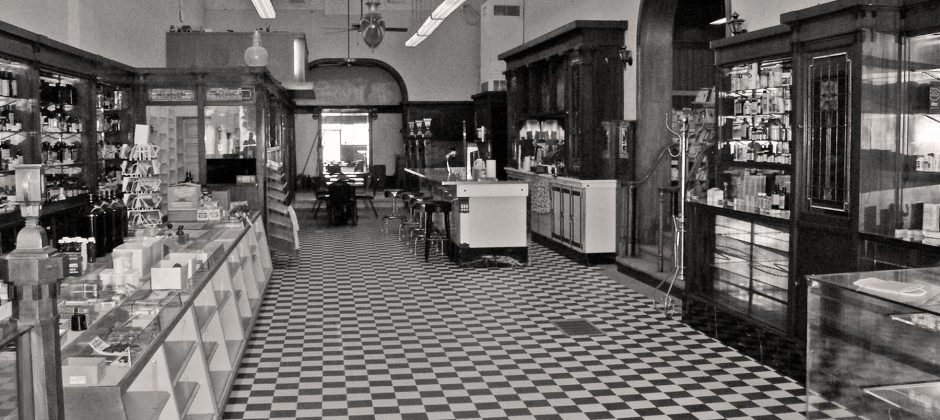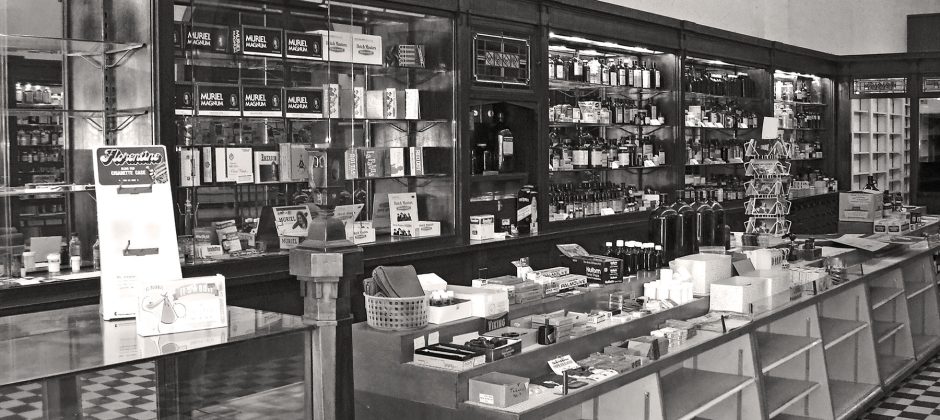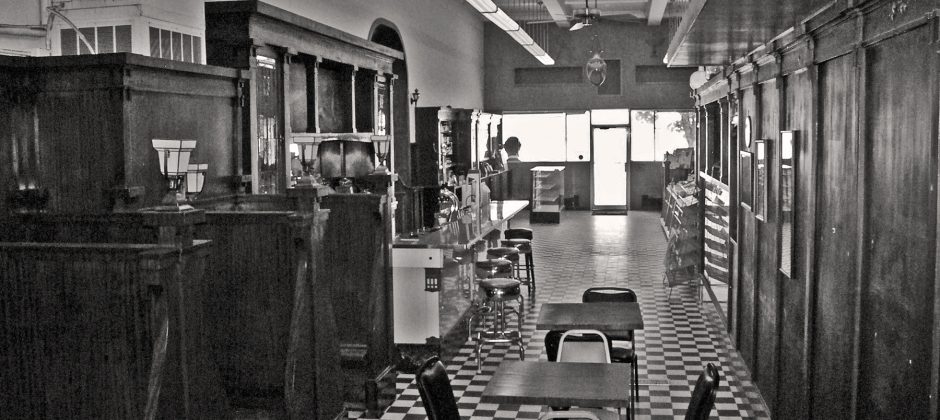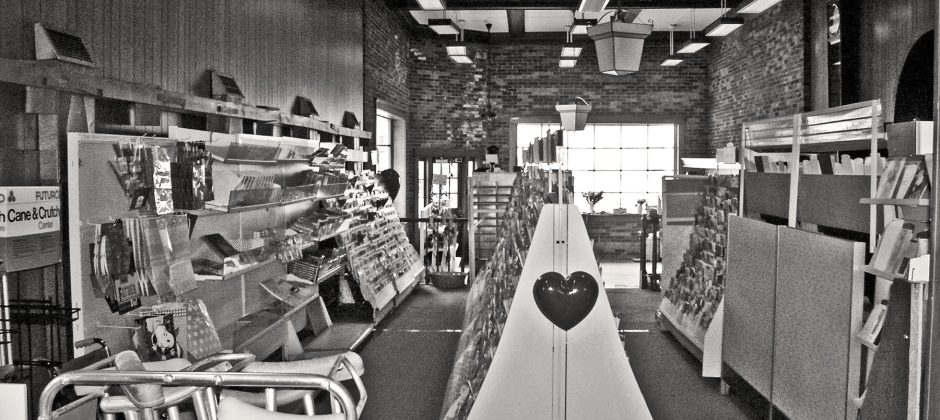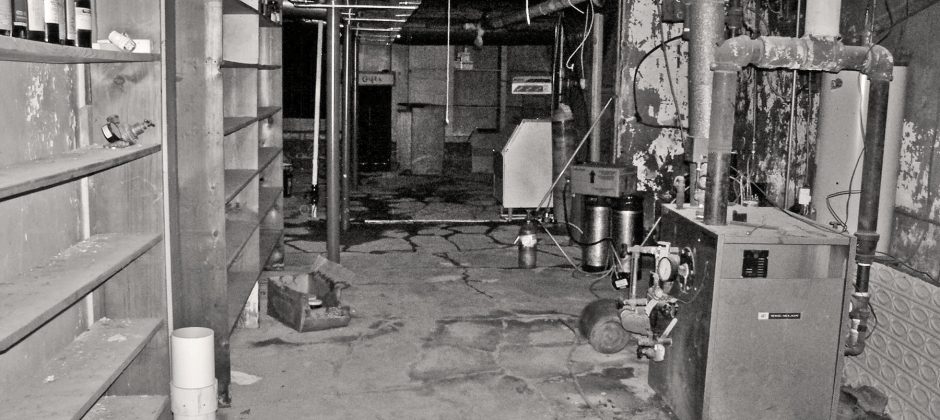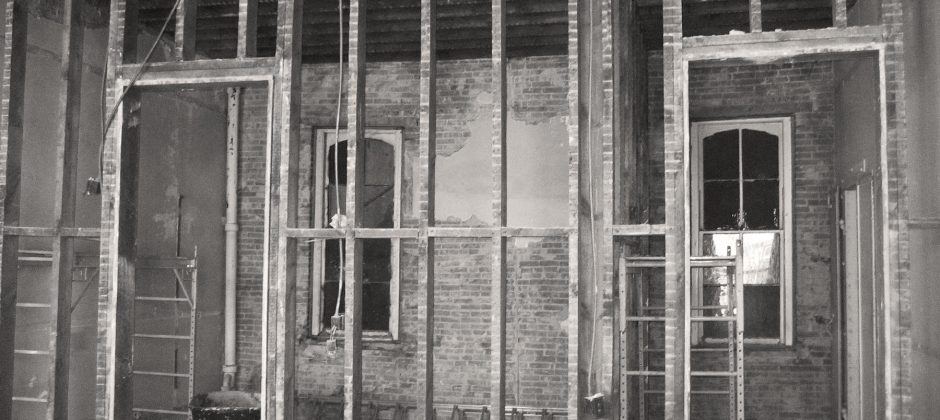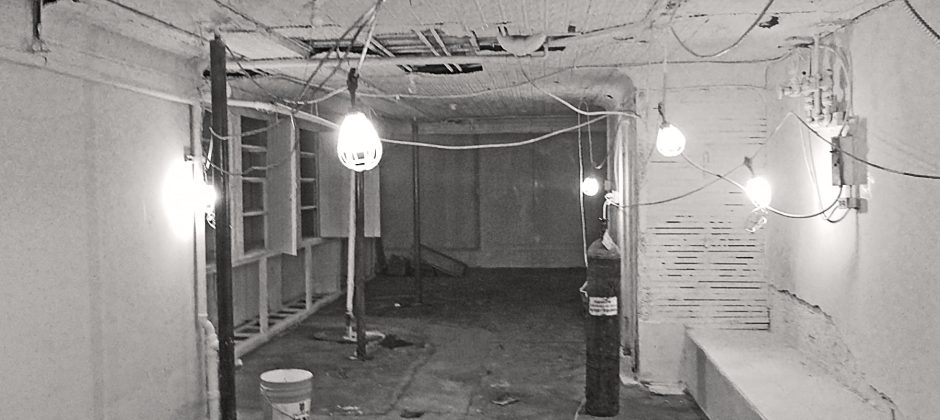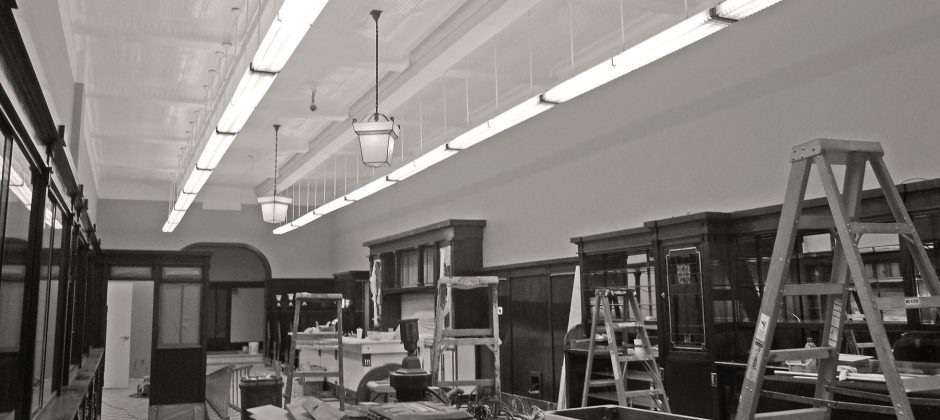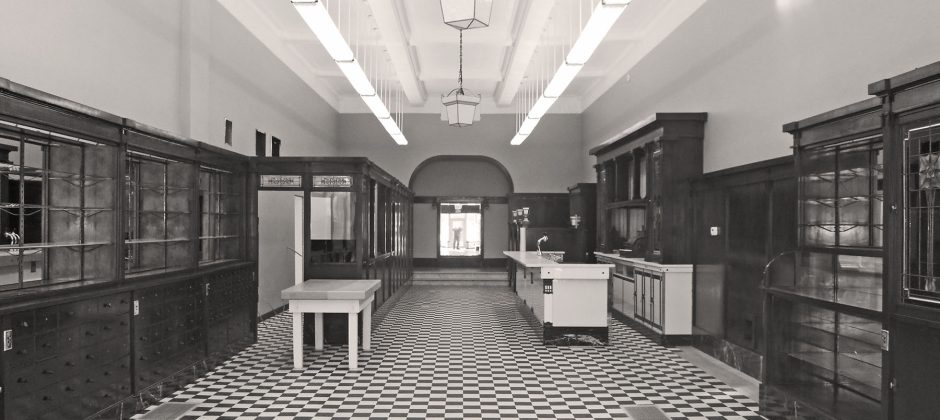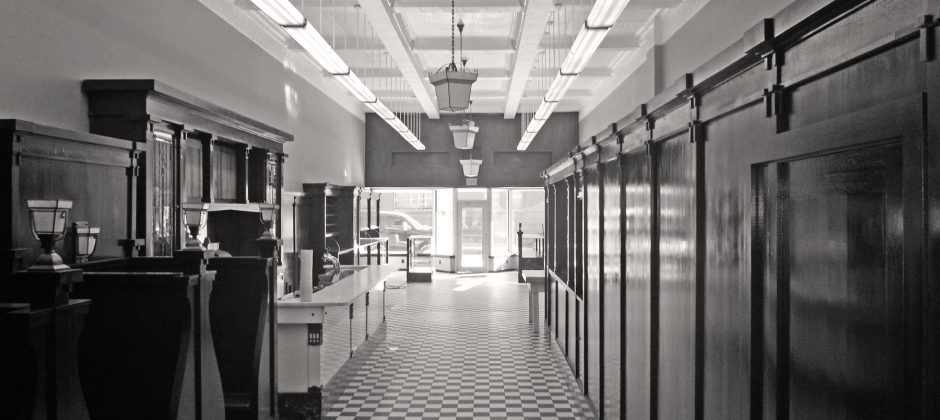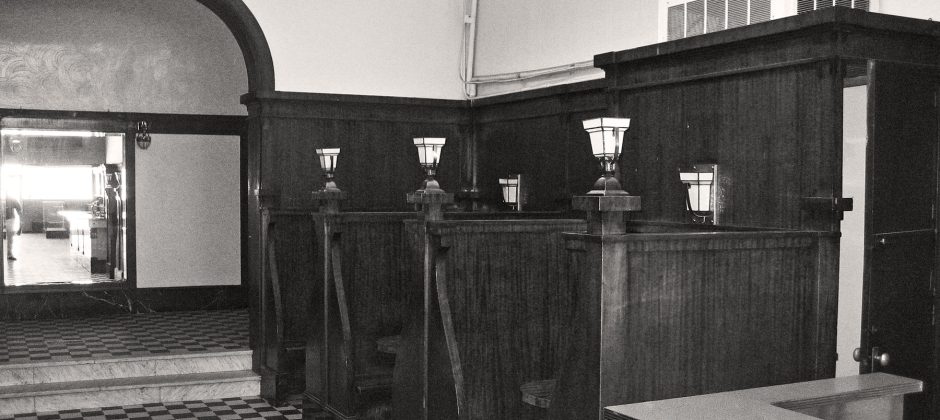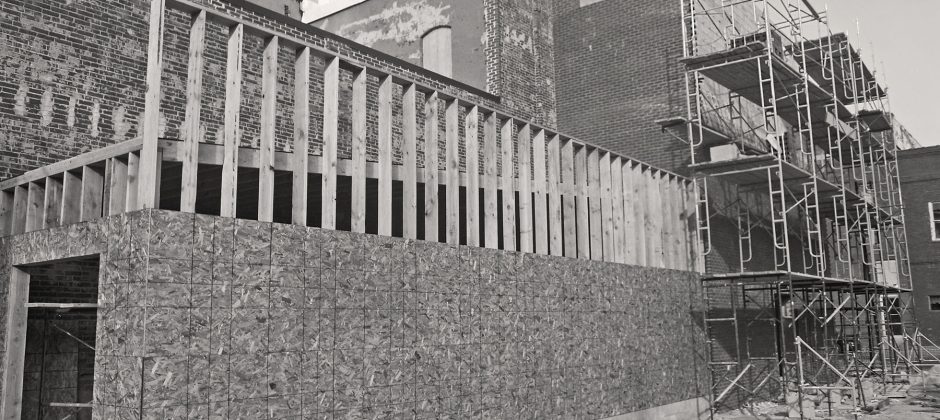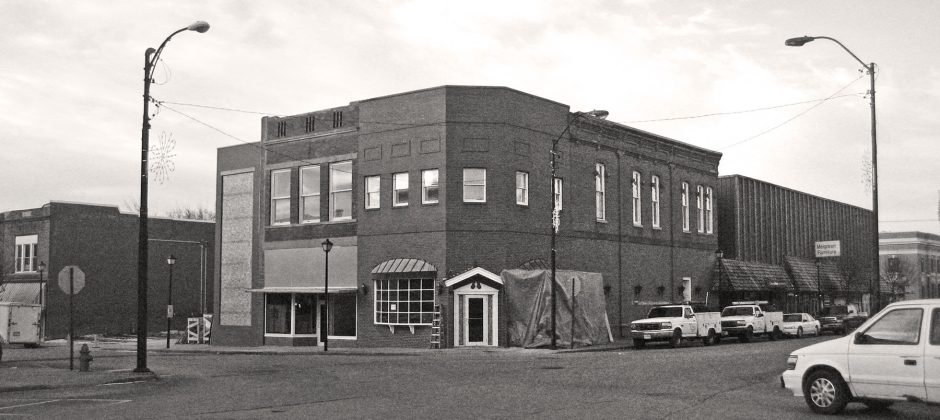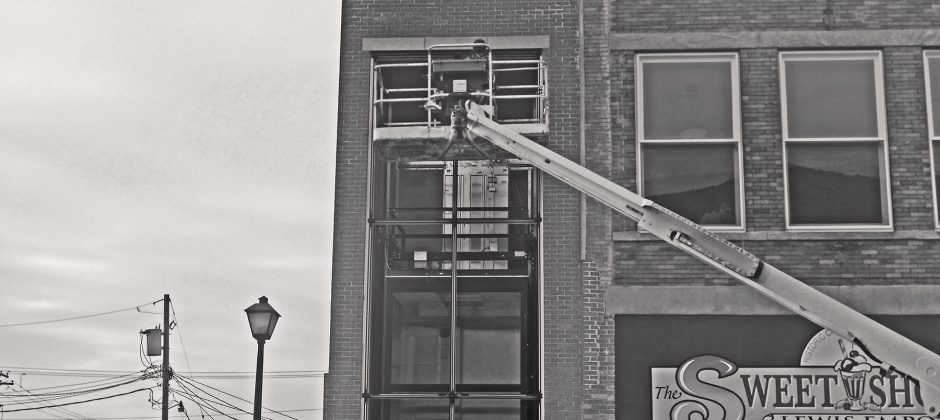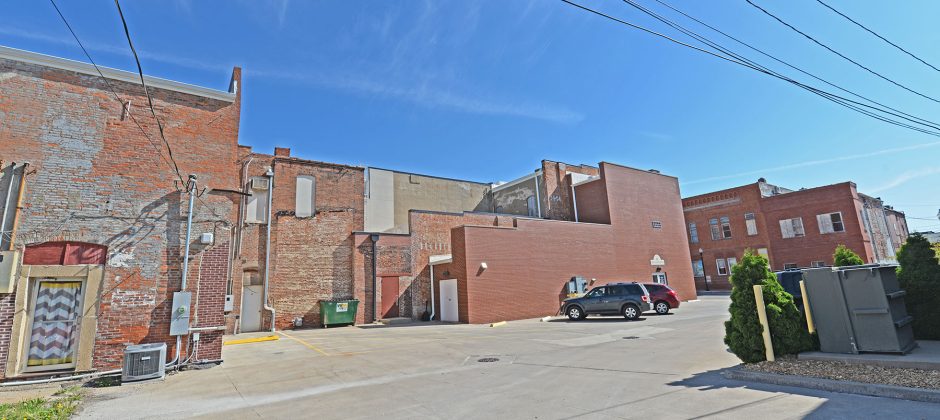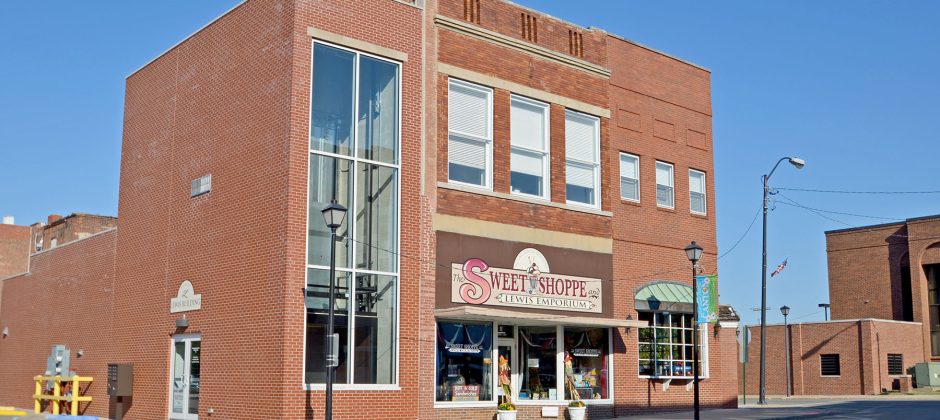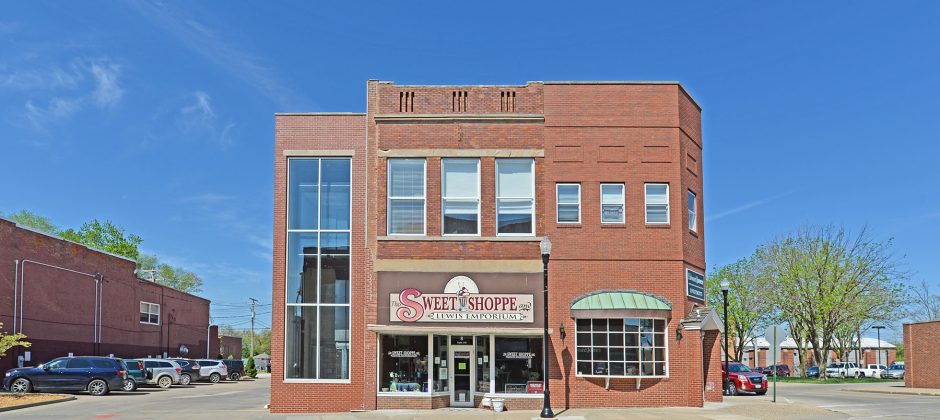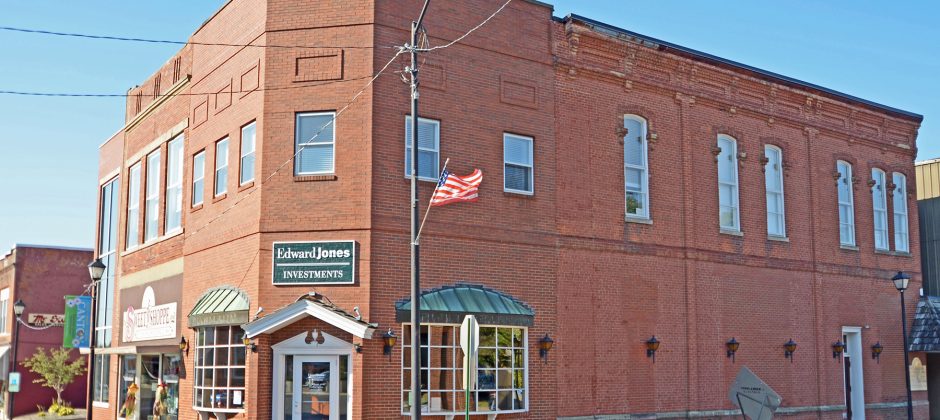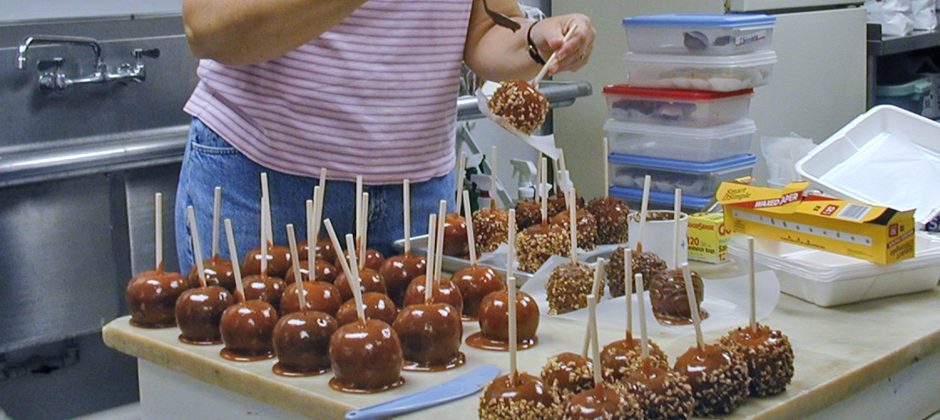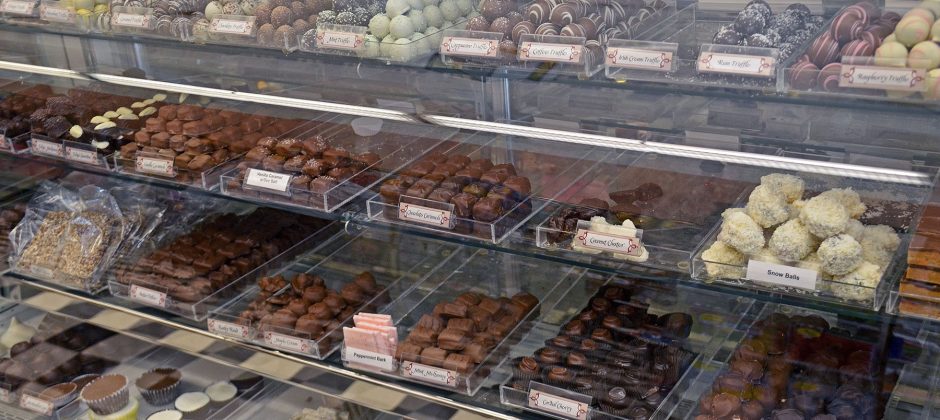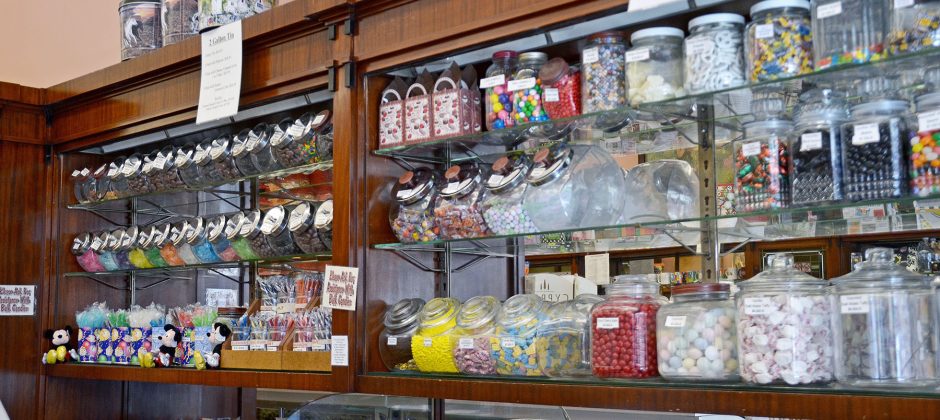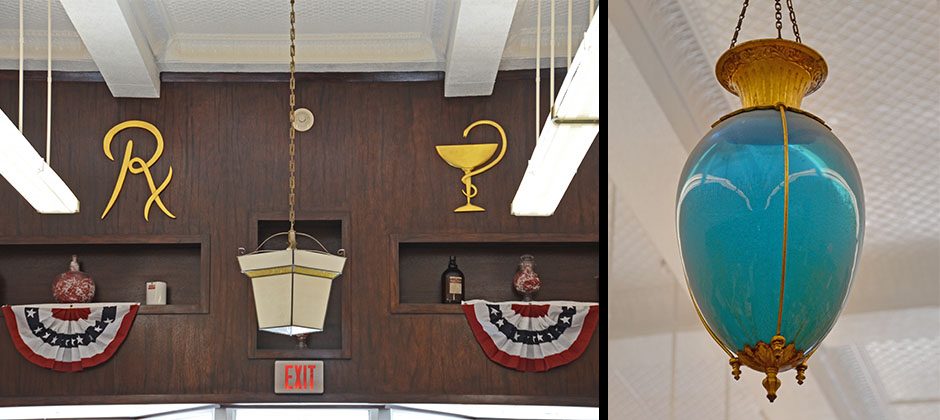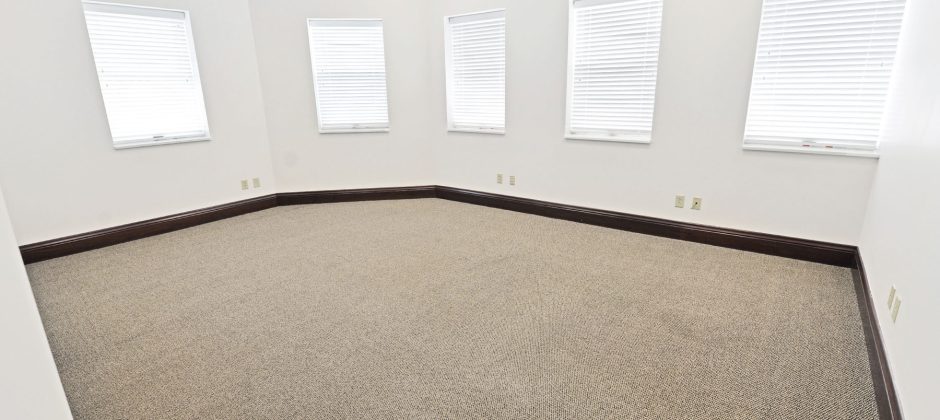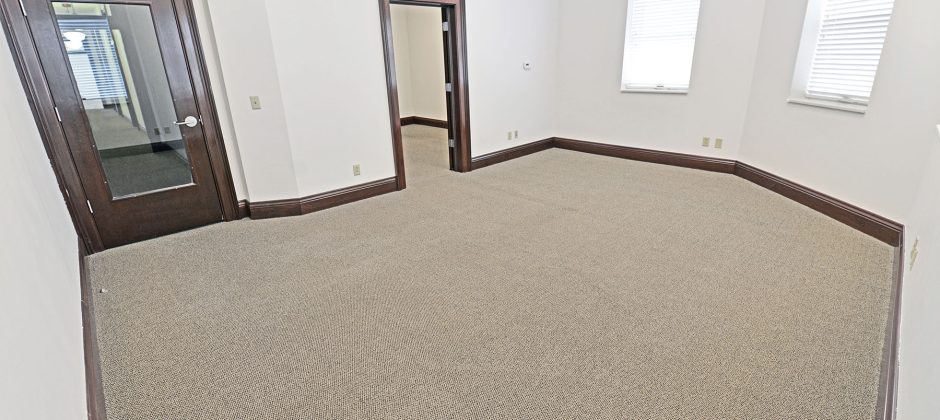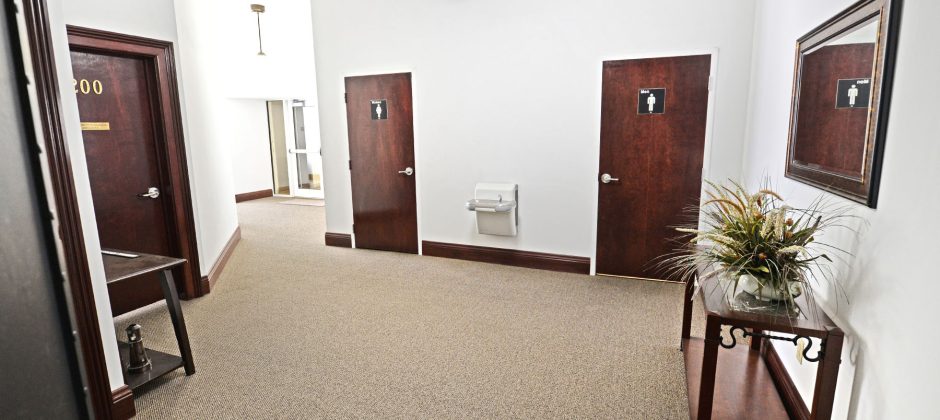In 1937, Ed Lewis Sr moved to Canton, Illinois, and purchased the Gustine Pharmacy built in 1889. His son, Ed Lewis Jr, also a Pharmacist, received his degree in 1943 and served in WW2 as a Naval Officer from 1943 – 1946. Following his return, he took over and ran the store from 1946 – 2005.
Ed Lewis Jr was a decorated citizen. He served as the President and member of the Illinois Pharmaceutical Association, the American Pharmaceutical Association, and the Central Illinois Pharmaceutical Association. He also served as the Canton Area Chamber of Commerce President and was named the Canton Chamber Citizen of the Year in 1997. Ed wrote the following publications: “Reflections of Canton in a Pharmacist’s Show Globe” in 1967, “History of Pharmacy in the State of Illinois” in 1980, and “The Heald Collection,” which was an anthology of sociocultural images of Canton and Fulton County. He was well known for his remarkable collections, especially the 19th-century pharmacy.
By 2005, Ed Lewis Jr sold and retired the pharmacy but continued to run the Emporium as an old-fashioned ice cream fountain. Bill Cook, co-founder of Cook Medical, a global medical device manufacturing company, and CFC Properties, a real estate development and property management company, once mentioned it was one of his favorite places growing up because he could purchase a classic soda or a velvety milkshake.
In 2009, the Lewis Pharmacy/Emporium Building was listed as one of the top ten most endangered historic buildings by Landmarks Illinois, a non-profit dedicated to preserving Illinois’ architecturally and historically significant structures and sites. Ed Lewis Jr’s son, Dave Lewis, a photographer, eventually inherited and opted to sell the store. CFC Properties purchased the property on August 7, 2009.
When CFC purchased the building, it was surprisingly in good shape. Entering the building, it still had its 6-inch black and white checkboard marble floor, mahogany paneling and tall shelves, 12-foot glass display cases (once used to display cigars), booths with craved initials, original pressed tin ceiling, chandeliers, and an egg-shaped 19th-century apothecary show globe.
The show globe, a glass vessel containing colorful liquid, once was an important pharmacy symbol from the 17th century in England to the early 20th century in the United States. The symbol helped guide those who were illiterate so they could find a physician. The theory goes that when the globe was red, it meant there was an epidemic of some kind, and it served as a warning advising people to stay away from town. Whereas when it was green, it meant it was safe.
Additional treasures inside the Lewis building remained framed on the walls, displaying, ‘Hot Fudge Sunday 20 cents, Root Beer Float 15 cents, Strawberry Cone 5 cents, and Vanilla Shake 10 cents.’
The soda-fountain countertop was missing; however, CFC was able to replace it with a new marble top, similar to what would have been there in the past. Very little was altered in the interior during the renovation; the space was primarily cleaned up. However, a kitchen area with candy-making equipment was added.
When the renovation was complete in 2010, Alice Herrick, Owner of The Sweet Shoppe, an old-fashioned establishment with a soda fountain serving soda, handmade ice cream, and candy, moved her business into the Lewis Emporium. Alice makes various hand-dipped chocolates, caramel apples, and more, while her husband, Ken Herrick, makes premium ice cream. When visitors enter, they are greeted with a wafting smell of sugary goodness as it now sits front and center in the glass display cases, with more stacked high on the back wall shelves. The revamped cozy establishment can seat roughly 30 customers, with up to 7 who can sit at the soda fountain on retro-style barstools.
The Lewis Emporium offers 5,600 square feet of leasable space, serving as retail and commercial space for business owners. In 2011, the two-story glass elevator was added.
Similar to how liquid ink takes to paper and spreads, restoration efforts in Canton’s downtown began taking the eye of other business owners and eventually spread across town. The Spoon River Partnership for Economic Development (SRPED), a non-profit dedicated to Canton’s development, acquired a state grant to help several owners fund façade improvements, which also encouraged interior enhancements. Feedback from the renovation crew with Pritchett Bros, a Bloomington contracting company, also helped inspire the plans to build a new boutique hotel, Canton Harvester Inn.
The identified approach to reviving a downtown, at least what worked for Bloomington, was to strengthen its corners and anticipate the owners in between to do their part.
Scott Snowman, Co-Owner of Snowman Studios Inc., an art gallery offering commissioned artist services and consulting, once shared…
“Every building that gets cleaned up puts pressure on the next person to clean up. We had seen what a snowball effect deterioration has. It happens the same way with positive change, too.”
Bill and his wife, Gayle, believed once a building was restored, it needed to have a purpose and be put to good use – often referred to as adaptive reuse. Furthermore, whatever was given another boost of life must be self-sustaining afterward.
Revitalization efforts eventually attracted new businesses and visitors from out of town.

